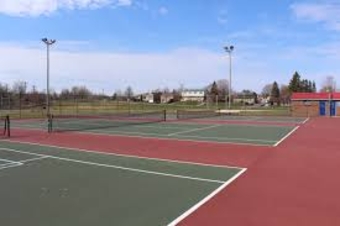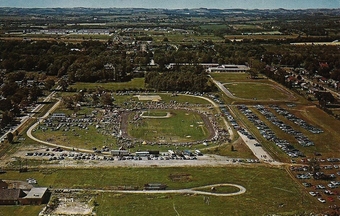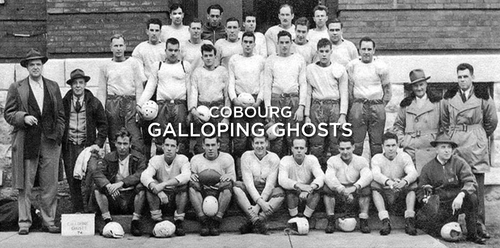Softball-Paul Currelly
PAUL CURRELLY AND HIS ANGELS
Paul Currelly’s leadership contribution to the longstanding success of the Cobourg Angels is well documented in the records of the CDSHF. Shedding light on the important aspects of Paul’s leadership style might serve to provide insight into how the unparalleled and long-term success of the Angels transpired.
Seen as one story, the narrative connects 6 decades with many worthy individuals contributing to the success for various lengths of time. There is a common thread that links all of these very capable people, players, and coaches alike. Paul Currelly meticulously built an organization that was often one step ahead of the changing circumstances that local sports almost inevitably face.
So, what were the skills that Paul Currelly had that went far beyond the teaching of fundamentals? A focus on detail and organization, an eye for talent (coaches and players) as well as persistence and planning for the next stage of team development.
Little of the long term and sustained success of the Angels could have been anticipated when the foundation of the team and organization was created during the 1960’s. Cobourg Baseball, Legion Branch 133 Minor Softball and Church League Hockey were already in place as athletic outlets for boys. The fact that Paul and his lovely wife Marian had 3 daughters was the first act that directed Paul’s considerable energy towards making athletic opportunities for girls.
At no point would it be suggested that Paul (and Marian of course) claimed that family planning was part of the early beginnings of the Angels story. As it turned out, perhaps hundreds of girls and young women would end up seeing themselves as a part of a very special sports family. Indeed, many of them would have viewed the Currelly residence as a welcoming second home.
EARLY DAYS
Long before the term “hub” became popularized, a relatively spacious back yard in the east end neighbourhood of Coverdale became a hub or gathering place for the friends and neighbours of the two older Currelly daughters, Carol and Nancy. Time spent there was often dedicated to playing “mildly” competitive games such as tag, running and jumping and of course softball. The kids had a safe and nurturing place to play centred on sports and most probably numerous breaks for snacks. He and Marian initially provided their own equipment from their former playing days. When the Coverdale area kids began house league play, Paul scoured the town and the local district for all manner of used articles. He also sought contributions from people such as Clarke Sommerville (another CDSHF inductee) to round off the considerable stockpile.
As is almost always the case, young children outgrow the limits of the backyard. In the case of the Angels’ story, this may have been the first time that Paul displayed his capacity to adapt to changing circumstances during the long history of the Aces/Angels organization. He helped initiate the idea of developing a house league based on geographic neighbourhoods. Other key founders from the various neighbourhoods included Max Smith, John Copeland, Jack Bevan, Garry Jones, Donald Dunn, and Ross Burgess. Their combined efforts came to fruition as the Cobourg Town League’s inaugural season came to pass in 1963.
Participation in the newly formed league was enthusiastically received by the neighbourhood girls. Registration was held at nearby Merwin Greer School where the Coverdale Aces also played their home games.
During the early years, the Coverdale neighbourhood was amalgamated into the Town of Cobourg and Paul negotiated a deal with the municipality to build a softball diamond located in what is now Peter Delanty Park. This achievement was characterized by a somewhat unique innovation. The topsoil from the construction of Brook Road North was redeployed to the park. Paul, as the story goes, agreed to spread the topsoil himself using a borrowed tractor in exchange for having the municipality build a backstop and infield for a softball diamond.
Of the three Currelly sisters, Patsy ended up playing house league games there while the older sisters moved their games to the Victoria Park diamond. Certainly, Paul’s facilitation benefited his youngest daughter, but he also helped leave a legacy for the Town and the local neighbourhood as a whole. Subsequently, the diamond was suitably named, The Paul Currelly Diamond.
Over the course of the time that the Coverdale Aces played in the Cobourg Town League, the team registered a winning streak of 52 games and numerous undefeated seasons. Ironically, Paul and his teams never again quite reached that level of statistical accomplishment. Yet the early successes, foreshadowed a story of outstanding and enduring achievement that continued even after Paul Currelly had passed.
SPREADING THE WINGS OF ANGELS
By 1968, the era of house league dominance had ended for the teams that the older sisters, Carol and Nancy, played on. A Juvenile team was formed from the best players in the house league. Now that Paul’s teams played at the central softball venue of Victoria Park, he often could be seen spreading sawdust on the wet diamond or even going as far as borrowing a pump from Cobourg Lumber to make a soaked diamond playable for an early evening game.
Previous to the season, Paul saw the value of having the Juvenile team participate in the nearby well-established Durham League which was principally composed of a group of adult teams. The quality of the league provided a new challenge and motivation for Currelly’s Juvenile team. In that very same year, the Juveniles successfully made the competitive leap by winning the Durham League Championship. The beginning of a new chapter was being written.
NETWORKING PAYS OFF
By 1972, Paul spearheaded the formation of The Lakeshore Juvenile Girls Softball League and his third and youngest daughter Patsy joined the team as a bat girl. Her inclusion as a bat girl was the first step that would eventually see her develop into a first-rate catcher. Both Carol and Nancy had successful early stints as pitching mainstays before they transitioned to infield positions. The Cobourg Angels experienced nearly immediate success as they were PWSA Juvenile Finalists in 1973. This was followed by a league championship in 1975 and two provincial Junior gold medals in 1975 and 1976.
What has always been a hallmark of Paul Currelly’s managing style, namely adapting to the needs, and changing circumstances of his players, manifested itself when Paul helped to establish a new league for his now Midget Angels. Patsy, Paul’s youngest daughter became a catching mainstay throughout the Angels’ most successful era.
Paul’s accurate evaluation of his players’ talent resulted in near immediate results. In 1977, the Midget Angels captured both the Claremont Tournament and the Lakeshore League Championship. By 1979, the Juvenile Angels claimed another PWSA championship as well as a number of provincial tournaments including the well-established local Grafton Tournament run by Dick Raymond. It is probably worth mentioning that the ‘79 team had a 50-7 season record which came close to the 52 wins recorded during the earliest house league seasons.
After 1979, the Angels transitioned to the Junior classification. In 1981, the Angels were provincial finalists, while in 1981 and 1982 the team accumulated a number of tournament and Lakeshore League successes. By this time, Paul may have seen that the team had perhaps reached a competitive ceiling and so, as the 1980’s unfolded, he shifted gears and directions once again. By the end the 1980’s, the decade might have been considered as the golden era for his Angels.
QUALITY ORGANIZATIONS ATTRACT QUALITY RECRUITS
Most highly competitive sports organizations eventually need to recruit in order to maintain or improve upon their competitive position. Once Paul’s teams emerged from a neighbourhood house league format, he began to attract players such as Peggy Kernaghan from the local rural area. The approach would eventually lead to the recruitment of players from Oshawa, north to Peterborough and east to Belleville. An early example of Paul’s approach to recruiting was evident when he recruited players from the surrounding area. Part of Paul’s recruitment strategy was to invite his wife Marian on “Sunday afternoon drives” that inevitably ended up at a prospect’s home. Currelly used his accumulated good will to arrange summer jobs for players in the Cobourg area.
Additionally, before the girls had drivers’ licenses, he would ensure their attendance at games and practices by arranging rides to and from the activity. It must have been evident to almost all of the people associated with the organization that Paul had very high expectations for himself and of course he similarly held high expectations for his players. An excerpt from one of Paul’s season end banquet speeches reveals the understood contract between players and the community they represented...
Our main objective is to have fun, to teach you the fundamentals and guide you through the wins and losses with the proper attitude. We demand a full effort at all times for we know that the harder we work, the more successful we will be. We also want you to realize that when you pull on the green and gold uniform, you represent a lot of people, the Town of Cobourg, Harnden and King Construction, your coaches, your parents, and most of all, yourselves. I must say that we were proud of the way you conducted yourselves this past season.
Outstanding players generally want to have a well-supported and structured environment with high expectations. Early hints of Paul Currelly’s successful recruitment based on the “Angels Brand” was manifested when outstanding Oshawa area pitcher Joan VanderZyden joined the team during the 1970’s. Another significant recruiting move brought in Hastings area player Su Morrow to play first base and pitch. Jim Morrow, Su’s father, would also join Paul Currelly to form a coaching combination that lasted into the 1990’s.
Over the course of the 1980’s, Paul identified considerable talent that would blend with the team’s character and positional needs. His efforts yielded 2 elite pitchers, (Elaine Devlin and Janice Cosgrey), the return of CDSHF Hall of Fame inductee Margie Mathews as well as perhaps the most prolific, fence clearing power hitter in PWSA history, Isobel “Izzy” Nichols. Speedy, hitting outfielders, Lea Ann Quinn and Vicki Wodzak were also recruited while the addition of Cathy Fertile and Lynn Lucas added depth to the infield.
The recruiting efforts yielded impressive results which allowed the Angels to make the competitive leap to Senior Tier II. Joining the Senior Tier II bracket cleared the way for the Angels to eventually leave their mark at the highest Provincial Tier I level. This tier of competition also provided the possibility for the Angels to compete for a Canadian National Championship nearly a decade later.
The decision to join the Senior Tier II bracket immediately paid off! The reorganized 1983 Angels won a bronze medal at the provincials that year and acquired Senior Tier II Provincial Championships in ‘84 and 85 and again in 1987. In 1988, the team was one out away from going to the Canadian Championships and settled for a Tier I silver medal.
Thereafter, Paul began to step back from his lead managerial role but the team continued its success by winning a Tier I Gold medal and with it, an unexpected storybook trip to the Canadian Championships in 1990.
COMING FULL CIRCLE
In 1987, Paul Currelly, along with Faye Gaudet, Su Morrow, Jan (Bevan) Bradford and Bill Zinkie, among others formed a new minor girls’ organization with the appropriate title of Junior Angels. This organization served both competitive and house league female players. Paul was prominent as an organizer while spearheading the recruitment of sponsors and coaches as well as securing the use of playing fields, the purchase of equipment and the establishment of a league for the 4 provincial teams.
The present Angels continue to thrive as a highly successful entity despite a general decline in the sport within Canada. Since its birth, 6 provincial championships, as well as an Eastern Canadian Championship, have been accumulated as preparations begin for the 2022 season.
FINAL THOUGHTS
The impressive accumulation of provincial championships and other accolades cannot be the sole measures of success for someone such as Paul Currelly. A huge number of individuals have been influenced by his efforts and example. Paul’s consistently high expectations and structure provided an attractive environment for those players who had a competitive attitude. He must have held a deep affection and respect for the people who were fortunate enough to have been part of his extended sports family. 50 years is a long time to be so highly committed to creating such an excellent environment for girls fastball players.
Post Script
If Paul and Marian had 3 boys instead of daughters Carol, Nancy and Patsy, there is every reason to believe that a different path would have yielded similar results for all of those individuals fortunate enough to have been included in the journey.
Paul continued to coach into his late years as he joined with longtime friend and beloved Angels coach, Jim Morrow to guide a women’s Intermediate team. As a fitting bookend to Paul Currelly’s devotion to his family and sports community, he volunteered as a baseball coach for his grandson, Matt Williams. One of these teams, The Cobourg Black Sox, won a provincial championship in 1998.
ACKNOWLEDGEMENTS
The considerable number of articles, photographs, newspaper articles (Layton Dodge), memorabilia posted on the CDSHF Website, Paul Currelly’s notes and year end speeches and my personal memories from the 1980’s provided the foundation for the article.
The quality of the final version was improved by being granted the privilege of having numerous conversations with Carol Currelly-Burnham, Nancy Williams, and Patsy Hand (the 3 “sissies”). Their enthusiasm, warm memories, anecdotes and unrelenting “fact checking” breathed life into the narrative and allowed me to link the decades together into a story of sorts.
Finally, thanks also go out to present CDSHF Directors, Jennifer Ashley and Don Conway who both encouraged me to take on the task. I hope that my efforts will provide local sports fans and community members, as well as long distance internet visitors, a few minutes of enjoyable reading.
John Hayden Sr.




